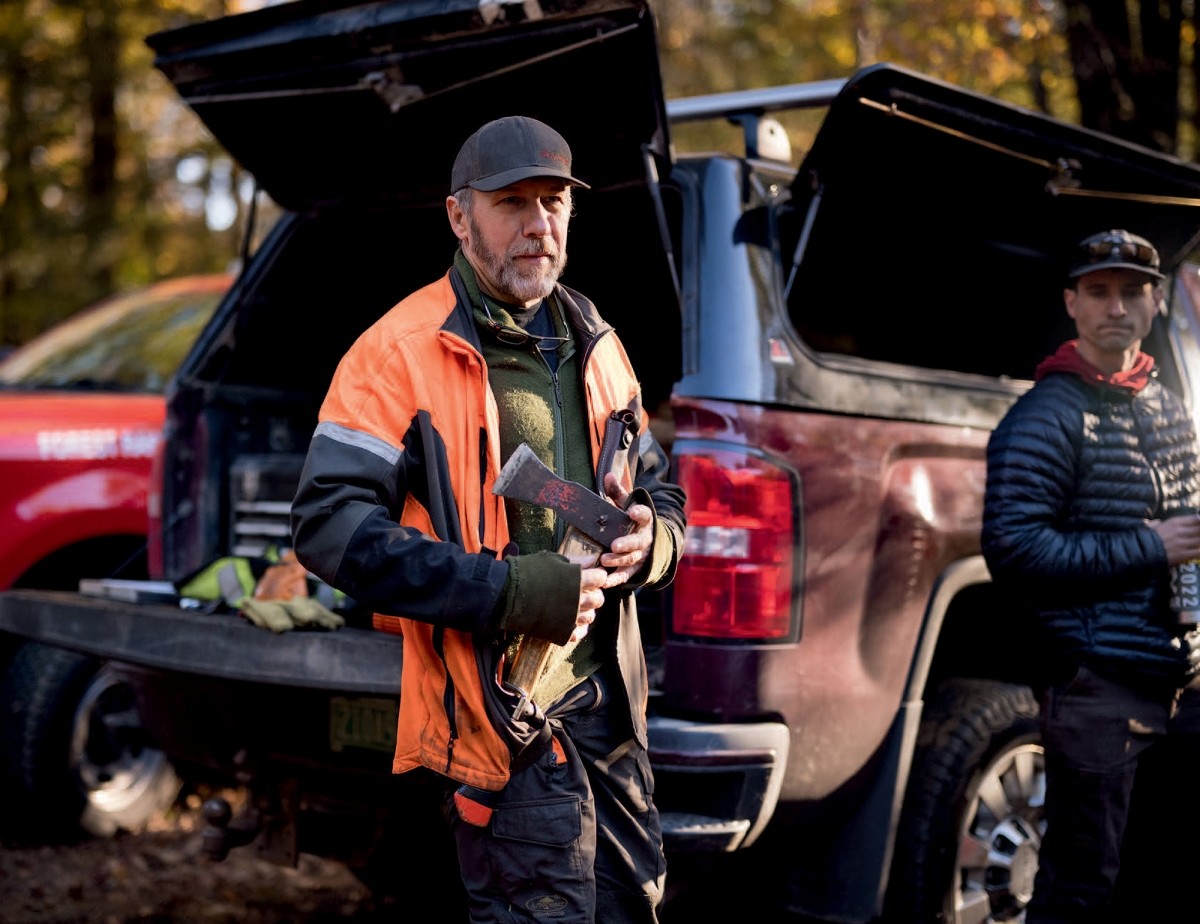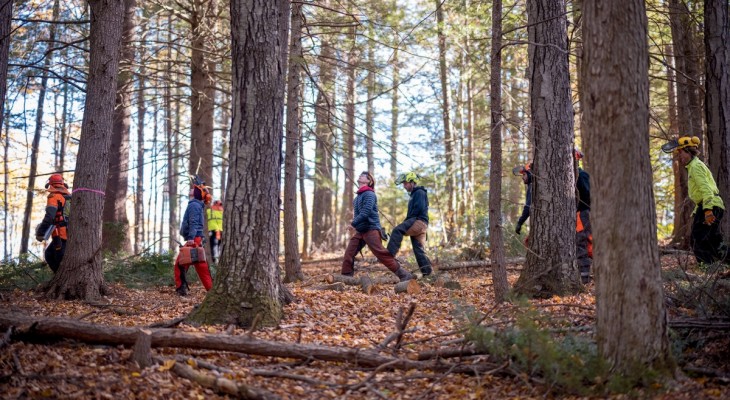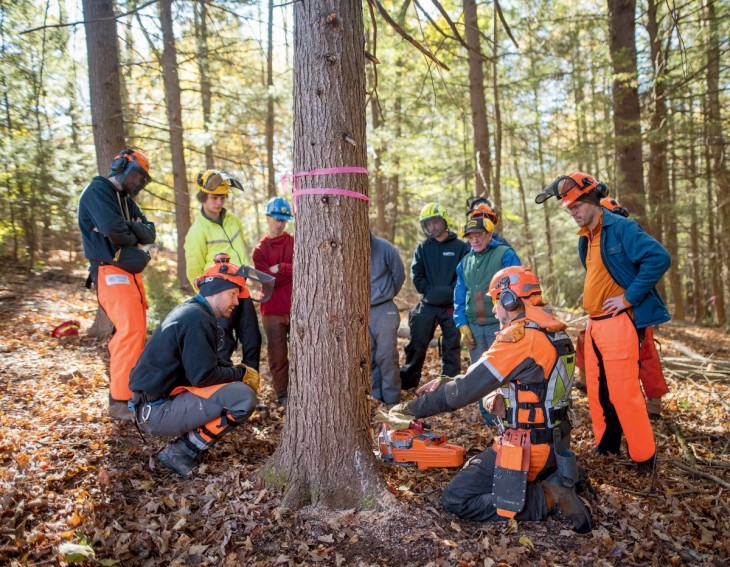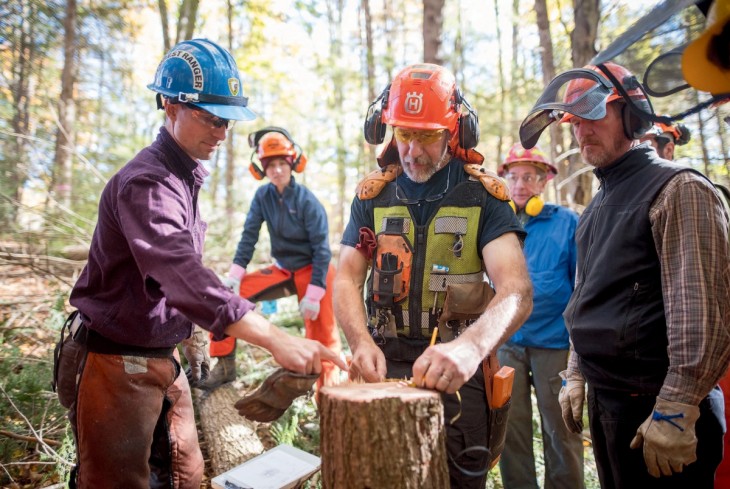
When John Adler, at the age of 23, first heard Swedish logger Soren Eriksson talk about new techniques for harvesting trees safely and efficiently, he saw an opportunity. Adler had been cutting wood since he was a kid – starting with a bowsaw – and was fresh out of Paul Smith’s College and looking to make a living in the woods.
“In logging, you get paid for what you get done. There’s no hourly rate there. The more wood I could cut and the more easily, the more money I made,” he said, and following Eriksson’s methods, Adler learned how to work more efficiently.
In 1983, Adler became an instructor in the new teaching method Eriksson had devised, called Game of Logging (GOL). More than 40 years later, he still lauds Eriksson’s vision of teaching in small groups, using hands-on instruction and repetition. Participants are scored on different techniques taught through the class in what Adler describes as friendly competition. “We don’t try to cover a whole bunch of info in one day,” he said. “We just start at the beginning and repeat it through the day until we get it.”
In 2001, Adler and David Birdsall founded Northeast Woodland Training, where they teach all four levels of GOL, as well as other logging and chainsaw courses. These photos are from a Level 1 class this past October in Guilford, Vermont, where Adler covered topics that included proper personal protective equipment, checking saws to make sure they’re safe, notching, bore cutting, and creating a comprehensive felling plan.














Discussion *